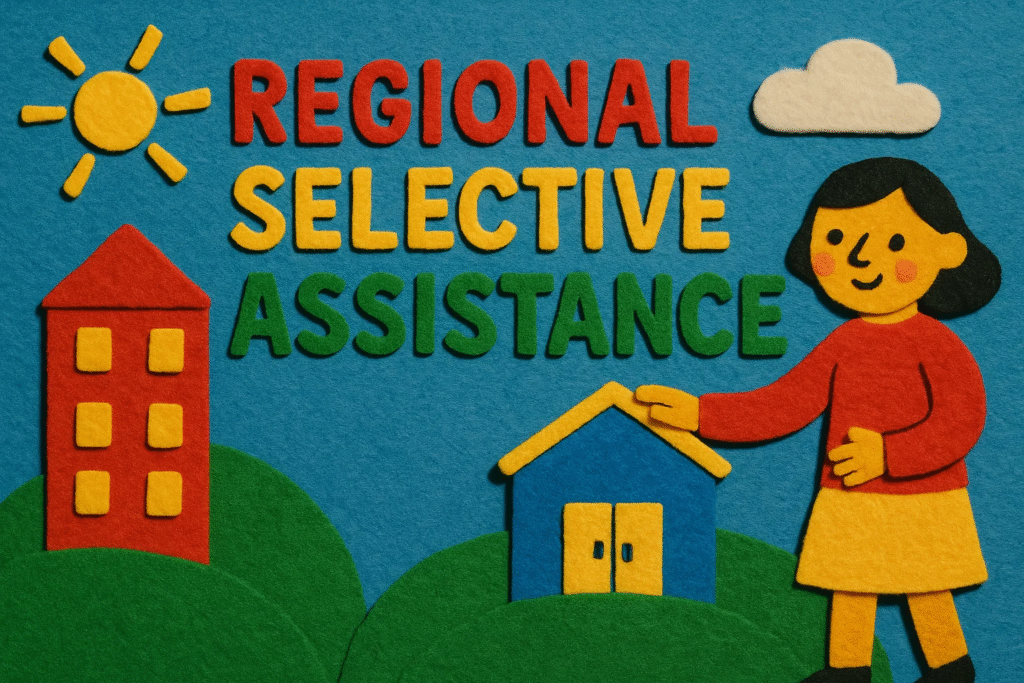introduction to regional selective assistance
Let’s face it: not every part of the UK gets the same level of attention when it comes to economic growth. While cities like London, Manchester, and Edinburgh enjoy booming industries, others—often in the North, parts of Wales, and certain rural areas—are still trying to catch up. But the good news? The UK government is committed to helping these regions develop, and one of the key ways it does that is through Regional Selective Assistance (RSA).
If you’ve never heard of RSA, don’t worry! It’s one of those behind-the-scenes programs that quietly helps businesses in economically disadvantaged regions by offering them financial support. But don’t let the word “financial” make it sound too corporate or dry—it’s actually a lifeline for many businesses, and it plays a huge part in creating jobs and growing communities. regional selective assistance
So, let’s break it down and see how RSA is making a difference, who benefits from it, and why it matters for businesses and the communities they serve.
What is RSA?

At its core, Regional Selective Assistance (RSA) is a funding program created by the UK government to help businesses set up, grow, or expand in economically weaker regions. Think of it as a boost for businesses that are willing to take the leap into areas that need a little extra push to get their economies rolling.
The idea is simple: offer grants or loans to businesses that want to invest in regions where jobs are scarce, industries are struggling, and economic activity is low. This gives businesses the financial breathing room they need to grow, innovate, and—importantly—create jobs. All of which helps the local economy get stronger, and helps people who might be looking for work have more opportunities. regional selective assistance
While RSA is mostly a feature of England’s economic development policy, the UK government also uses similar strategies in Scotland, Wales, and Northern Ireland, through their devolved administrations. Each region gets a tailored version of RSA, depending on their unique needs and challenges. regional selective assistance
Why Does RSA Matter?
So why should we care about RSA? Well, it’s all about fairness and balance. For many years, the UK economy has been heavily centered around a few major cities and regions. Places like London and the Southeast often attract more investment and development, while other areas struggle to get noticed. RSA helps tip the scales a little bit more evenly. regional selective assistance
Think of it like a game where some players start with a head start, and RSA gives the underdogs a chance to catch up. By offering financial support to businesses that invest in regions that need it most, RSA aims to create jobs, boost local economies, and create more equal opportunities across the country.
This kind of regional development isn’t just about being nice—it’s smart economics. By helping struggling regions grow, RSA helps increase the overall wealth of the country, making it more resilient and diverse. More jobs, more skills, more innovation—these are things that ripple out and benefit everyone, even the already-thriving areas. regional selective assistance
How Does RSA Actually Work?
In practice, RSA is all about helping businesses reduce the financial risks of setting up or expanding in a region that might be considered less attractive by investors. For example, a company might want to build a new factory, hire more workers, or roll out a new product in a struggling area. But the upfront costs of all that can be daunting. RSA funding comes in and makes that investment a little less risky. regional selective assistance
Businesses applying for RSA can receive grants, loans, or a combination of both. These funds help cover various costs like purchasing new equipment, upgrading facilities, or even hiring new staff. The ultimate goal is to give businesses the financial help they need to grow, so they can then contribute to growing the local economy through job creation, innovation, and productivity. regional selective assistance
The process is fairly straightforward, but businesses do need to show that their investment will benefit the local economy. This means proving that the expansion will lead to the creation of jobs, increased local spending, and better productivity. Essentially, businesses need to convince the government that their plans are good for everyone—not just for them. regional selective assistance
The government doesn’t just hand out funding willy-nilly—it’s about making sure that RSA money is used in the best possible way to create lasting change in the region. And to ensure that businesses are sticking to their promises, there’s regular monitoring to make sure the funds are being used properly. regional selective assistance
Who Gets RSA?
If you’re wondering whether your business qualifies for RSA, it comes down to a few main things: location, impact, and need. regional selective assistance
First off, RSA is primarily aimed at businesses in regions that have lower levels of economic activity—think areas with higher unemployment rates or lower-than-average income levels. These are the places where RSA can have the most impact. regional selective assistance
Secondly, businesses need to show that their investment is meaningful. RSA isn’t just for any business that happens to be in the right location—it’s for companies that can truly make a difference in the local economy. This could be through job creation, innovation, or boosting productivity. So, businesses with solid plans to grow and contribute to the area’s development are more likely to be approved.
Finally, RSA funding is meant to be an incentive. That means businesses must prove that without this funding, they would be less likely to invest in the region. If a business could expand anywhere, but they choose a less attractive region because RSA makes it financially viable, then that’s the kind of investment RSA is there to support. regional selective assistance
How RSA Helps Businesses
For businesses, RSA is a great way to take some of the financial pressure off. Expanding into a new region or starting a new project can be a huge financial risk. But with RSA, the government steps in to help reduce that risk, allowing businesses to invest in areas they might not have considered otherwise. This means more room for growth, more innovation, and more chances for success.
Let’s say you’re a manufacturer looking to build a new factory in a region with a higher-than-average unemployment rate. Without RSA, the costs of building the factory, hiring staff, and setting up shop might be too much to take on. But with RSA, you get the financial support to cover some of these costs, making the decision to invest in that area a whole lot easier.
It’s not just about getting free money—RSA is also about giving businesses the opportunity to thrive, especially in regions where growth might otherwise be slow. The end result? More sustainable businesses, more jobs, and stronger local economies.
How RSA Benefits Communities
For communities, the benefits of RSA are huge. When businesses expand or start up in economically struggling areas, they create jobs. And not just any jobs—these are typically good jobs, with decent wages and benefits, that can support families and improve the standard of living. regional selective assistance
But job creation is just the beginning. As businesses grow, they often invest in local infrastructure—things like better transport links, improved local amenities, and more skilled workers. This has a knock-on effect, making the area more attractive to other businesses and encouraging even more investment.
The ultimate goal of RSA is to create a sustainable and thriving local economy. This means moving away from reliance on a small number of industries and instead diversifying the local economy with a range of businesses. Over time, this diversification makes the region more resilient and better able to weather future economic challenges. regional selective assistance
The Modern Twist: Green and Digital Investments
Over the years, RSA has evolved to keep pace with the changing economy. Today, there’s a growing focus on supporting green and digital investments. As the world turns its attention to climate change and sustainability, businesses in struggling regions are increasingly encouraged to invest in renewable energy, low-carbon technologies, and digital transformation. RSA funding is now helping businesses embrace these future-facing industries, creating jobs that are not only good for the economy but also good for the planet.
Conclusion: RSA’s Role in Building a Stronger UK
Regional Selective Assistance is more than just a funding program—it’s a tool for creating a fairer, more balanced UK economy. By giving businesses in disadvantaged regions the financial support they need to grow, RSA is helping to boost job creation, support innovation, and foster long-term economic growth.
For businesses, RSA offers the chance to invest in new opportunities without the financial burden. For regions, it’s a way to create more jobs, develop infrastructure, and attract sustainable growth. And for the UK as a whole, it’s about ensuring that no region is left behind, helping every corner of the country thrive and contribute to the national economy.





